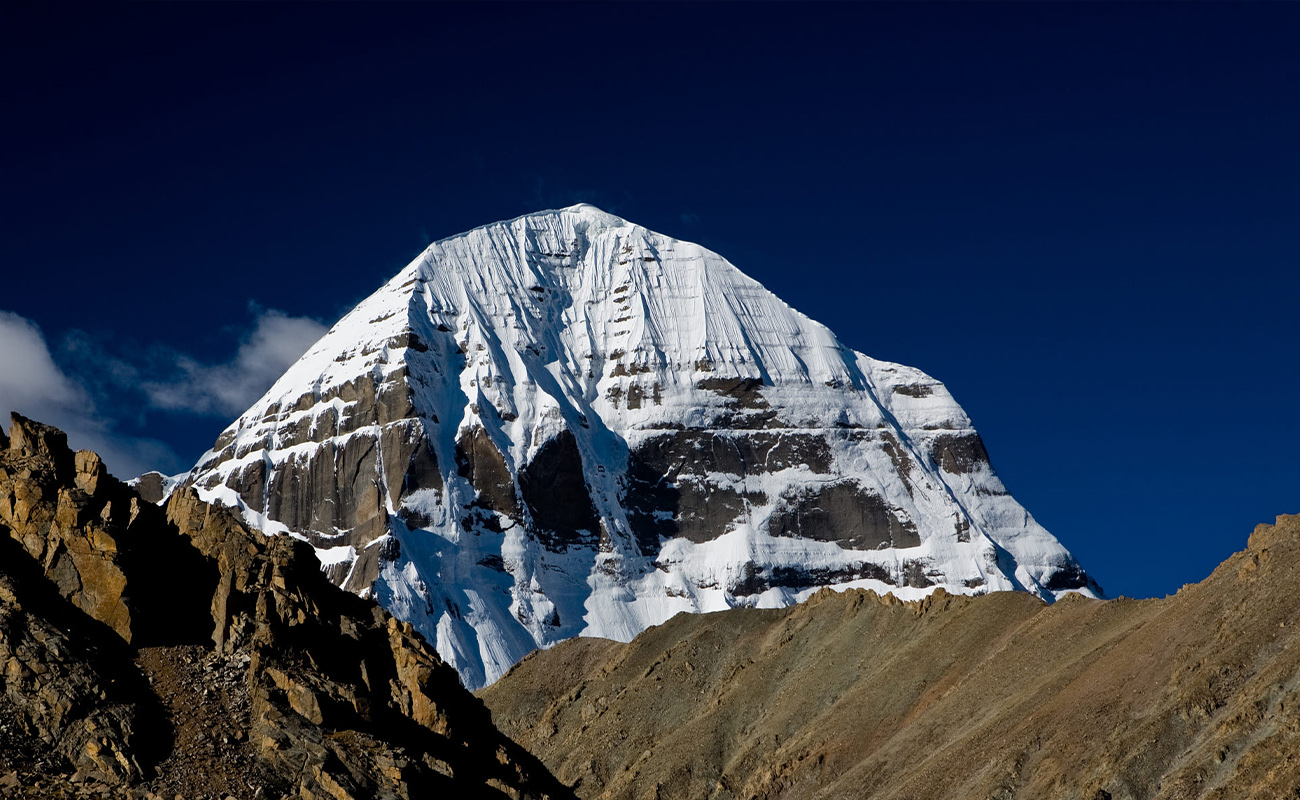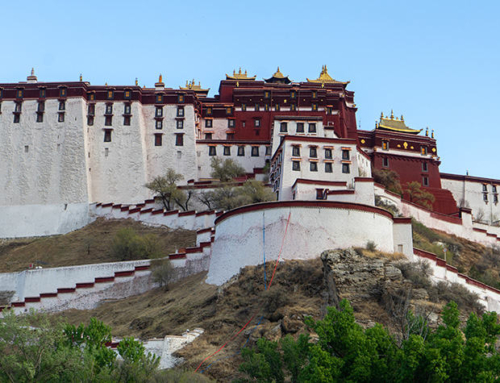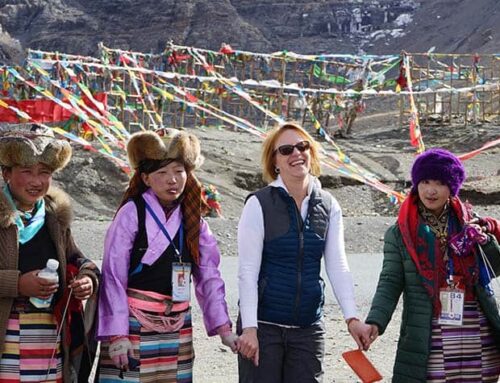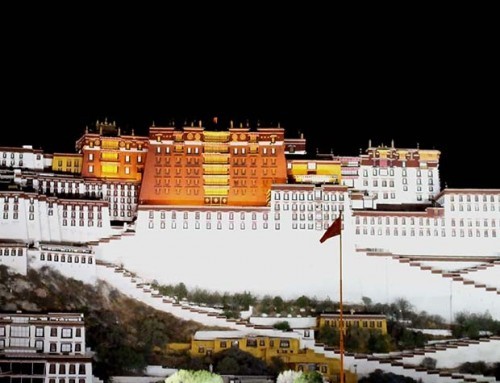Four Faces of Mount Kailash. In the heart of Tibet stands a towering mountain, Mount Kailash, a place of immense spiritual and religious significance, its summit touching the heavens while its base cradles the hopes and aspirations of countless pilgrims. This article seeks to unravel the mysteries that shroud this awe-inspiring peak, inviting you to embark on a virtual pilgrimage to the sacred land of Tibet. Here, amidst the rugged, pristine landscapes, and the whispers of ancient traditions, we delve deep into the four faces of Mount Kailash, each revealing its own enchanting tale.
As we journey through the intricacies of this sacred site, we hope to transport you to a realm where faith and nature coexist in perfect harmony. Just as the pilgrims have done for centuries, we invite you to experience the beauty and spirituality that radiate from every facet of this mystical mountain.
In partnership with I-Tibet Travel & Tours, we embark on a voyage not just through physical landscapes but through the spiritual and cultural heart of Tibet. We’ll walk you through the remarkable confluence of spirituality, geography, and tradition that make Mount Kailash a beacon of hope for all who venture here.
So, join us as we explore the South Face, the West Face, the North Face, and the East Face of Mount Kailash, each with its own allure, each bearing the imprints of ancient beliefs, and each waiting to share its secrets. Together, we’ll witness the majesty and benevolence, the golden glow and enigmatic charm, and unlock the mysteries that have drawn countless souls to the foot of this timeless marvel.
As we journey together, we’ll discover the rich tapestry of Mount Kailash’s spiritual, cultural, and natural significance. Whether you’re planning a visit to this sacred place or seeking to delve into its wonders from afar, this article is your gateway to a deeper understanding of one of the most revered sites on Earth.

Mount Kailash - A Spiritual Marvel
Mount Kailash is far more than a mere geological formation; it is a living testament to the enduring power of spirituality and faith. The very contours of this awe-inspiring peak seem to resonate with the prayers and devotion of countless pilgrims who have made the arduous journey to its base.
It stands as a beacon of hope and faith for people from diverse backgrounds and belief systems. This sacred mountain is a common thread that binds the tapestry of Hinduism, Jainism, Buddhism, and Bon, four of the world's most ancient and revered religions.
For Hindus, Mount Kailash is the Abode of Shiva, the holiest of holies, a place where Lord Shiva resides in eternal meditation. Jain tradition reveres it as the site where Bhagwan Rishabdev, the first Tirthankara, attained Nirvana. Buddhists consider it the residence of Demchok, a divine figure, while the followers of the Tibetan Bon tradition hold it as the soul of Tibet, a place of paramount spiritual importance.
This holy mountain is more than a spiritual center; it is a wellspring of life. Mount Kailash gives birth to four major rivers - the Sutlej, Brahmaputra, Karnali, and the Indus. These rivers flow forth in four different directions, symbolically dividing the world into four parts. This powerful imagery of division and unity, of the merging and separation of waters, resonates deeply with the spiritual teachings of these religions.
In this sacred land, faith and geography intertwine, creating a unique tapestry of belief and nature. Mount Kailash's spiritual significance extends beyond its physical presence, enveloping the surrounding landscapes and the hearts of those who revere it. It is an embodiment of the profound connection between spirituality and the natural world, a connection that continues to inspire and move people across the globe.
As we delve deeper into the four faces of Mount Kailash, we'll unravel the layers of symbolism and mystique that make this mountain an eternal marvel, a testament to the unending power of faith and the profound relationship between humanity and the natural world.
Four Faces of Mount Kailash
Mount Kailash, often regarded as the Axis Mundi of the Earth, stands as an architectural marvel of nature. Its presence is believed to connect the spiritual and physical worlds, and it's as though it reaches out to the heavens above. One of its most intriguing features is the way each of its faces is meticulously aligned with the cardinal points, emphasizing the profound spiritual symbolism associated with this sacred mountain.
As we journey through the Kailash Mansarovar Yatra, we explore these four unique faces, each an embodiment of different emotions and graced with a different jewel. They stand as gateways to different realms, representing the spiritual and cultural diversity that converges at this holy site.
South Face of Mount Kailash: The Sacred Threshold
The South Face of Mount Kailash is the initial gateway that beckons pilgrims as they embark on their spiritual odyssey through the Himalayan terrain. This face, often referred to as the mountain's "backside," reveals its mesmerizing spine-like feature, which runs from its apex to its base. To Hindu pilgrims, this spine carries profound significance as it is considered the very backbone of Lord Shiva, the deity often associated with transformation, destruction, and renewal.
As pilgrims approach this monumental mountain, it becomes evident that the journey isn't merely a physical one; it's a profound spiritual expedition. The South Face offers a sense of protection and solace, as devotees believe that by worshipping this face, they can ward off untimely death, a testament to the deep faith and reverence that encapsulates the entire Kailash Mansarovar Yatra.
Here, amidst the awe-inspiring landscapes, the devotion of pilgrims becomes tangible, their footsteps in alignment with an age-old tradition. The South Face of Mount Kailash is where the spiritual and the natural worlds harmoniously converge, opening the door to a transformative pilgrimage. It is this face that initiates the spiritual journey and sets the tone for the profound encounters that await as pilgrims circumambulate the sacred peak, an experience that transcends the ordinary and connects them to the divine.
West Face of Mount Kailash: The Face of Benevolence
As the pilgrimage to Mount Kailash continues towards Dirapuk, an intriguing vista unfolds before the pilgrims - the West Face of this sacred mountain. It is on this face that some fortunate souls claim to have perceived an astonishing sight: a colossal, human-like visage etched into the mountain, believed to be the face of Lord Shiva himself. This sighting amplifies the aura of mystique that envelops Mount Kailash and reinforces its sanctity in the eyes of those who tread its paths.
The West Face, believed to be adorned with the precious gemstone Ruby, emanates an atmosphere of compassion and benevolence. Here, the mountain seems to extend a warm embrace, inviting pilgrims and travelers alike into its spiritual and natural sanctuary. It's as if the very essence of benevolence flows from the mountain, reminding all who pass by that amidst the spiritual rigors of this sacred journey, there is also room for empathy and kindness.
This aspect of Mount Kailash adds an extra layer to its multifaceted personality, reinforcing the belief that the mountain not only represents the awe-inspiring forces of nature but also embodies a profound spiritual consciousness. The West Face stands as a symbol of compassion in the world of devotion and reverence that surrounds Mount Kailash. It is a testament to the diverse experiences that await pilgrims on their path to circumambulate this magnificent mountain.
North Face of Mount Kailash: The Golden Splendor
The North Face of Mount Kailash stands as the undisputed icon of this sacred mountain, widely recognized and frequently captured in photographs. When the first rays of the sun embrace this face, it transforms into a resplendent spectacle, earning it the endearing moniker "Golden Kailash." This radiant appearance is more than just a visual delight; it symbolizes the very essence of purity and divinity.
Pilgrims en route to Dirapuk are privileged to witness the magnificence of the North Face, often framed between two mountain ranges, creating a dramatic contrast of scale and grandeur. This golden face is believed to be composed of pure gold, which bestows upon it a crisp and sharp countenance, evoking an overwhelming sense of awe and reverence.
The North Face of Mount Kailash serves as a reminder that spirituality and nature are intimately interconnected. It is here, amidst the rugged terrains and under the vast Himalayan skies, that pilgrims are reminded of the profound power and majesty of the natural world. This face of the mountain, with its golden allure, invites all who behold it to contemplate the profound mysteries of Mount Kailash and the spiritual significance that permeates every crevice and contour of this revered peak.
East Face of Mount Kailash: Enigmatic Guardian
The East Face of Mount Kailash beckons from a distance, revealing its ethereal charm, especially during the Inner Kora of the mountain. However, as pilgrims continue their journey along the Outer Kora, the view of the East Face gradually recedes, yielding to the rise of other imposing mountain peaks.
Shrouded in a cloak of enigma, the East Face remains veiled in mystery, its secrets hidden from the casual observer. Believed to be composed of Crystal, it is as though the very heart of Mount Kailash is encapsulated within this face, preserving its deepest and most enigmatic essence.
The East Face of Mount Kailash serves as a silent guardian of the mountain's most profound secrets, a testament to the idea that some aspects of spirituality and nature can only be fully understood through introspection and contemplation. This enigmatic visage, though elusive, adds an element of depth to the spiritual journey, inviting pilgrims to delve deeper into the mysteries of this sacred mountain.
In our exploration of the East Face, we are reminded that the beauty and significance of Mount Kailash extend beyond what meets the eye. The mountain's spirituality is not solely defined by its visible facets, but also by the unseen, the unexplained, and the mysteries that await discovery by those who venture deeper into its heart.
These four faces together encapsulate the full range of human emotions, from majesty to compassion, from mystery to intimidation. Each face is a unique facet of Mount Kailash, and each one enriches the spiritual journey of those who are fortunate enough to make the pilgrimage. In our exploration of these faces, we unravel the spiritual and cultural layers that have made Mount Kailash a pinnacle of devotion and reverence for centuries.
Mount Kailash Yatra: The Sacred Journey
The Kailash Mansarovar Yatra stands as an annual testament to the enduring faith and devotion of hundreds of pilgrims who converge from all corners of the globe. This pilgrimage is not merely a physical journey; it is a spiritual and adventurous odyssey that encapsulates the very essence of Mount Kailash's beauty and significance.
For those who embark on this sacred voyage, the Kailash Mansarovar Yatra is a transformative experience. It is a sojourn that transcends the ordinary, leading pilgrims through some of the world's most rugged and pristine landscapes while simultaneously guiding them through the depths of their spiritual beliefs. The journey is a blend of both inner and outer exploration, as travelers delve into their own souls and connect with the divine in the natural world.
The yatra encompasses the circumambulation of Mount Kailash, a ritualistic act that is believed to cleanse the soul and free it from the cycle of birth and rebirth. Each step taken in the shadow of this sacred peak carries the weight of centuries of tradition, faith, and reverence.
This pilgrimage offers a unique opportunity for travelers to immerse themselves in the spiritual and cultural tapestry of Tibet, to witness the convergence of faith and nature, and to experience the timeless rituals that have been performed for generations.
The Kailash Mansarovar Yatra is not only a journey of the body but also of the soul. It's a voyage that weaves together the elements of faith, adventure, and discovery. As pilgrims traverse the rugged terrains, cross crystal-clear rivers, and breathe in the crisp Himalayan air, they also traverse the landscapes of their own beliefs, witnessing the majestic beauty of Mount Kailash from all four of its faces, and discovering that the mountain is more than just rock and stone; it's a living testament to the power of faith, spirituality, and the incredible bond between humanity and the natural world.
Mount Kailash - A Natural Marvel
Beyond its profound spiritual significance, Mount Kailash stands as a remarkable natural wonder, seamlessly blending the extraordinary with the ordinary. This majestic mountain is not just a towering sentinel of faith but also an integral component of Earth's geographical tapestry.
One of its most awe-inspiring natural attributes lies in its role as the birthplace of four significant rivers - the Sutlej, Brahmaputra, Karnali, and the Indus. This unique phenomenon of one mountain being the source of these four major rivers is not merely a geographical coincidence; it holds deep spiritual and cultural implications.
The Sutlej, Brahmaputra, Karnali, and the Indus rivers are the lifelines of the vast regions they flow through. They sustain civilizations, nurture diverse ecosystems, and provide water for millions of people. Each river carries with it a distinct identity, and their origins at the feet of Mount Kailash connect the spiritual and natural worlds in a profound way.
The mountain's unique geography, with its colossal peaks and pristine glacial formations, serves as a reservoir of the world's freshwater resources. Its pristine landscapes are a testament to the importance of preservation, as the waters originating from Kailash cascade down to nourish the lands and communities downstream.
This role as a water source is not merely utilitarian; it is deeply symbolic. The convergence of spirituality and nature finds its perfect expression in the fact that Mount Kailash serves as the wellspring of life. Just as pilgrims circumambulate the mountain in a journey of spiritual renewal, the rivers that emerge from its base flow forth to rejuvenate the lands they traverse.
Mount Kailash's significance, therefore, extends far beyond its towering peaks and sacred legends. It is a living testament to the profound connection between spirituality and the natural world, a reminder that faith and nature are intertwined in ways that continue to inspire, captivate, and nourish the souls of those who are fortunate enough to witness its majesty.
Mount Kailash - A Cultural Gem
The influence of Mount Kailash transcends the realms of spirituality and geography; it weaves its significance deeply into the tapestry of Tibetan culture. This sacred mountain, with its towering presence and rich history, has played a pivotal role in shaping local traditions and cultural practices, making it a priceless cultural treasure for the Tibetan people.
For Tibetans, Mount Kailash is more than a natural landmark; it's a living symbol of their spiritual and cultural identity. It serves as a focal point for numerous rituals, festivals, and celebrations. Pilgrims and travelers alike are drawn to its base, not only for the circumambulation but also to partake in the cultural festivities that unfold in its shadow.
The mountain is associated with various legends, folktales, and historical accounts, further intertwining it with Tibetan heritage. Its four faces, each resonating with unique qualities and emotions, are reflected in the art, music, and storytelling of the Tibetan people. Mount Kailash's very presence in Tibet is a reminder of the unbroken cultural heritage that persists through generations.
Festivals such as the Saga Dawa, Losar, and the Kora around Mount Kailash are deeply rooted in Tibetan culture. These celebrations mark important milestones in the lives of the Tibetan people and provide a glimpse into the enduring traditions that persist in the region.
Moreover, Mount Kailash's surroundings are home to monasteries, hermitages, and sacred sites that have nurtured the spiritual and cultural life of Tibet for centuries. The presence of these sites adds a spiritual dimension to the cultural treasure that Mount Kailash represents.
In essence, Mount Kailash is not only a geological marvel or a spiritual sanctuary; it is a living testament to the cultural richness of Tibet. It is a beacon that draws people from all corners of the world, inviting them to share in the unique blend of spirituality, geography, and culture that makes this sacred mountain a treasure trove of cultural heritage. As pilgrims and travelers traverse its paths, they become witnesses to the profound connection between Mount Kailash and the people of Tibet, a connection that continues to enrich and inspire those who have the privilege to experience it.
Experiencing Mount Kailash: A Journey of a Lifetime
If you have set your sights on a pilgrimage to Mount Kailash, careful preparation and a deep understanding of the journey are paramount. The experience that awaits you is nothing short of extraordinary, offering a seamless blend of spirituality and nature in a way that is truly one-of-a-kind.
Permits and Logistics: Before embarking on this sacred voyage, it's imperative to ensure you have the necessary Tibet Travel Permits and logistical arrangements in place. Due to the remote location of Mount Kailash and its spiritual significance, permits are a mandatory prerequisite. Understanding the intricacies of the journey, including transportation, accommodations, and the best times to visit, will make your pilgrimage more seamless.
Physical and Mental Preparedness: The journey around Mount Kailash is not for the faint of heart. It involves trekking at high altitudes, sometimes in adverse weather conditions. Physical fitness and mental resilience are assets that will serve you well. It's crucial to prepare your body and mind for the rigors of the pilgrimage, ensuring that you can fully immerse yourself in the experience.
Cultural Sensitivity: Mount Kailash holds profound spiritual significance for various religions and cultures. Respecting the local customs and cultural norms is essential. Understanding the rituals and traditions associated with the mountain will not only enhance your experience but also demonstrate your reverence for the sacred site.
The Inner and Outer Kora: The circumambulation of Mount Kailash can be done in two distinct ways – the Inner Kora and the Outer Kora. The Inner Kora is a more arduous and demanding journey, while the Outer Kora offers a relatively gentler path. Each option provides a unique perspective on the mountain, allowing you to choose the experience that aligns with your capabilities and goals.
Spiritual and Natural Connection: As you embark on the pilgrimage, keep in mind that you are not just traversing physical terrain; you are also journeying through spiritual and cultural dimensions. It's an opportunity to connect with the natural world and explore your own spirituality in a profound way. Be open to the emotions and revelations that may arise during your time at Mount Kailash.
A Unique Intersection: Mount Kailash is a place where the spiritual, geographical, and cultural worlds intersect. It is a harmonious blend of faith, nature, and human heritage. Embrace the unique qualities of this sacred mountain and allow it to guide your journey, both inwards and outwards.
A Lifetime Experience: Visiting Mount Kailash is a once-in-a-lifetime experience, a journey that promises to leave an indelible mark on your heart and soul. It's an opportunity to witness the power of faith and the beauty of nature coming together in an extraordinary display of spirituality.
A pilgrimage to Mount Kailash is an exploration of the profound. It's a journey that encompasses more than just physical distance; it traverses the realms of the mind and spirit. The experience is a rare privilege, offering a chance to witness the magnificence of nature and the depth of human faith in a way that is truly unique. As you prepare for your journey, remember that it's not just a physical adventure; it's a spiritual quest that will forever change the way you perceive the world.
Conclusion of four faces of Mount Kailash
Mount Kailash rises as an enduring symbol of spirituality, the cradle of life-giving rivers, and a cultural treasure for the Tibetan people. It is a testament to the profound connections between nature, culture, and faith, a place where spirituality and the natural world harmoniously converge. As we draw this narrative to a close, it becomes abundantly clear that Mount Kailash is much more than just a mountain; it is a living embodiment of the intricate tapestry that is our world.
Mount Kailash invites pilgrims and travelers from every corner of the globe to partake in an unparalleled journey of the soul, a pilgrimage that transcends the physical and transports one into the heart of the spiritual and cultural world of Tibet. The circumambulation of this sacred mountain is a transformative act, a step that cleanses the spirit and frees it from the shackles of the mortal realm. It's an opportunity to embrace the awe-inspiring forces of nature and the profound depths of faith.
As we contemplate the multifaceted nature of Mount Kailash, we are reminded that it is a place where spirituality and geography coexist, where the waters of life flow from its base, and where traditions and cultures have blossomed for generations. It's a destination that embodies the quintessence of human experience – the search for the divine, the appreciation of the natural world, and the preservation of cultural heritage.
In essence, a journey to Mount Kailash is a voyage into the very heart of existence. It offers an opportunity to connect with the spiritual and experience the magnificence of nature in a way that transcends the ordinary. The mountain stands as a beacon, a guide for all those who seek a deeper understanding of the world and their place within it.
Mount Kailash is more than just a physical destination; it's a sacred realm where the extraordinary and the everyday intersect. It's a living testament to the power of faith, the significance of nature, and the enduring beauty of cultural heritage. In a world filled with wonders, Mount Kailash stands as a peerless gem, a place where spirituality and nature are one, where the human spirit soars, and where the heart finds solace in the grandeur of the natural world.
FAQs of four faces of Mount Kailash
Is Mount Kailash open for visitors throughout the year?
Mount Kailash is open for visitors depending on the season. It is advisable to plan your visit during the summer months, typically between May and September, when the weather is most favorable. During this time, the paths are less obstructed by snow and ice, making the circumambulation more feasible and safe.
From Late october until early April, Kailash remains closed for all travellers.
What permits are required to visit Mount Kailash?
To embark on a journey to Mount Kailash, travelers need to obtain specific permits. The primary permits include the Tibet Travel Permit, which allows you to enter Tibet, and the Kailash Region Permit, which is essential for accessing the sacred Kailash area. It is imperative to secure these permits well in advance of your journey.
But if you are an Indian Citizen you will have to get Kailash Yatra permit from Chinese Indian Pilgirm service centre, no normal Tibet travel permit is enough to get you to kailash.
Are there accommodations available during the Kailash Mansarovar Yatra?
Yes, there are accommodations available along the Kailash Mansarovar Yatra route. These accommodations typically come in the form of guesthouses and tents. While options may vary, it's advisable to book your Tour with a recommend local kailash Mansarovar yatra agency for best accommodations in advance to ensure a comfortable stay during your pilgrimage.
What should I pack for the Mount Kailash journey?
When preparing for the Mount Kailash journey, it's essential to pack wisely. Be sure to include warm clothing, as temperatures can drop significantly, especially at night. Comfortable and sturdy shoes are a must, given the uneven terrains. Don't forget to bring sunscreen to shield yourself from the intense mountain sun, as well as any personal medications you may require. Carrying a reusable water bottle is recommended, along with essential travel documents to meet permit requirements and maintain your safety.
Is there a specific dress code for visiting Mount Kailash?
While there isn't a strict dress code, it's advisable to dress modestly and respectfully, especially when visiting sacred sites around Mount Kailash. This cultural sensitivity is a sign of respect for the local customs and traditions, fostering a harmonious and meaningful pilgrimage experience. Wearing clothing that covers shoulders and knees is a generally accepted practice.
“A transformative journey with Kailash Yatra Co, your trusted agency for the sacred Kailash Mansarovar Yatra in Tibet. Lead by Tenzin Woaber, a seasoned professional with two decades of experience, we prioritize creating lasting memories for our clients. Our success is gauged by client satisfaction, and our motto, "We care for you and want to knit an array of memories for you from our scheduled trip," reflects our commitment to personalized service. ”









